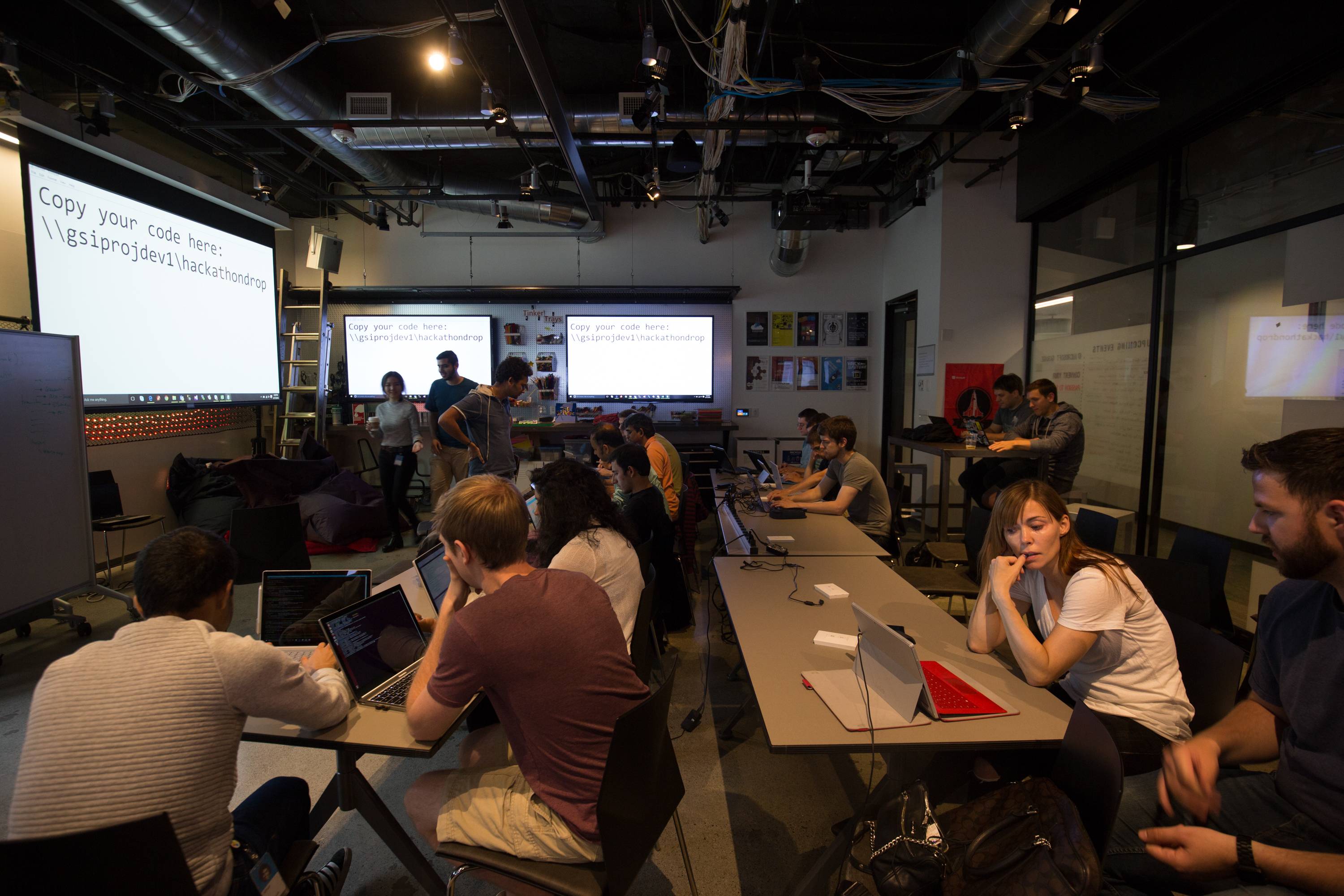Click to Flow: Our First Hackathon
On an overcast Friday, over thirty hackers gathered in Microsoft’s Building 27 to do something new with Flow. Normally, Flows are triggered based on virtual events, like an email sent or a Trello card posted. For the first time, these hackers were triggering actions from the press of a button in the physical world.

This self-powered button acted as the trigger for various Flows
These buttons say “I was clicked!” to a messaging service called Azure Service Bus. Flow can monitor Azure Service Bus so that for every button press, a Flow is triggered. This is not your average button: our team co-hosted the hackathon with Microsoft IT’s Innovation Group. Recently, they’ve been playing with a self-powering button whose click generates enough energy to send a signal to a nearby Raspberry Pi receiver. The Pi sends a message to an Azure Service Bus “topic” which is associated with a unique button.
Hackers pulled off some awesome scenarios with Flow: at the click of a button you can generate Facebook posts, or deliver yourself an email with latest Twitter search results, or keep a spreadsheet of your close friends and send a text saying “missing you!” to each of them. One of the winning ideas proposed to place multiple buttons around a building, put “smile” and “frown” stickers on the two click options, use Flow to log “smile” and “frown” presses in SQL, and then generate heatmap visualizations of where building tenants are “smiling” (delighted) or “frowning” (frustrated).

Over thirty Microsoft employees hacked on Flows triggered by button presses

Flow with buttons makes people very happy
We had a lot of fun sharing our product with hackers from all over Microsoft. Microsoft’s IT organization is blazing a trail in creating software and piloting Internet of Things solutions to enable greater employee productivity in buildings. With their solutions, you can know if conference rooms are available in real-time, monitor noise and temperature conditions, leverage predictive intelligence, more easily locate colleagues, and even gain insight about space utilization to better optimize building resources. Check out this video about their work. As a future possibility, by integrating with building sensor technology, Flow could offer building administrators endless facilities customization. For example, with access to building sensor data, Flow could help control smart lighting that responds to noise conditions in order to influence the right behaviors in open floor plan environments. Or, with a similar two-click button solution, Flow could monitor “up” and “down” clicks to adjust room temperature based on real-time preferences in an office environment, or use it to obtain other feedback such as if people are happy with certain facilities services or not. Flow is breaking down the barriers between the services in your life, so that your services don't constrain your ideas.


